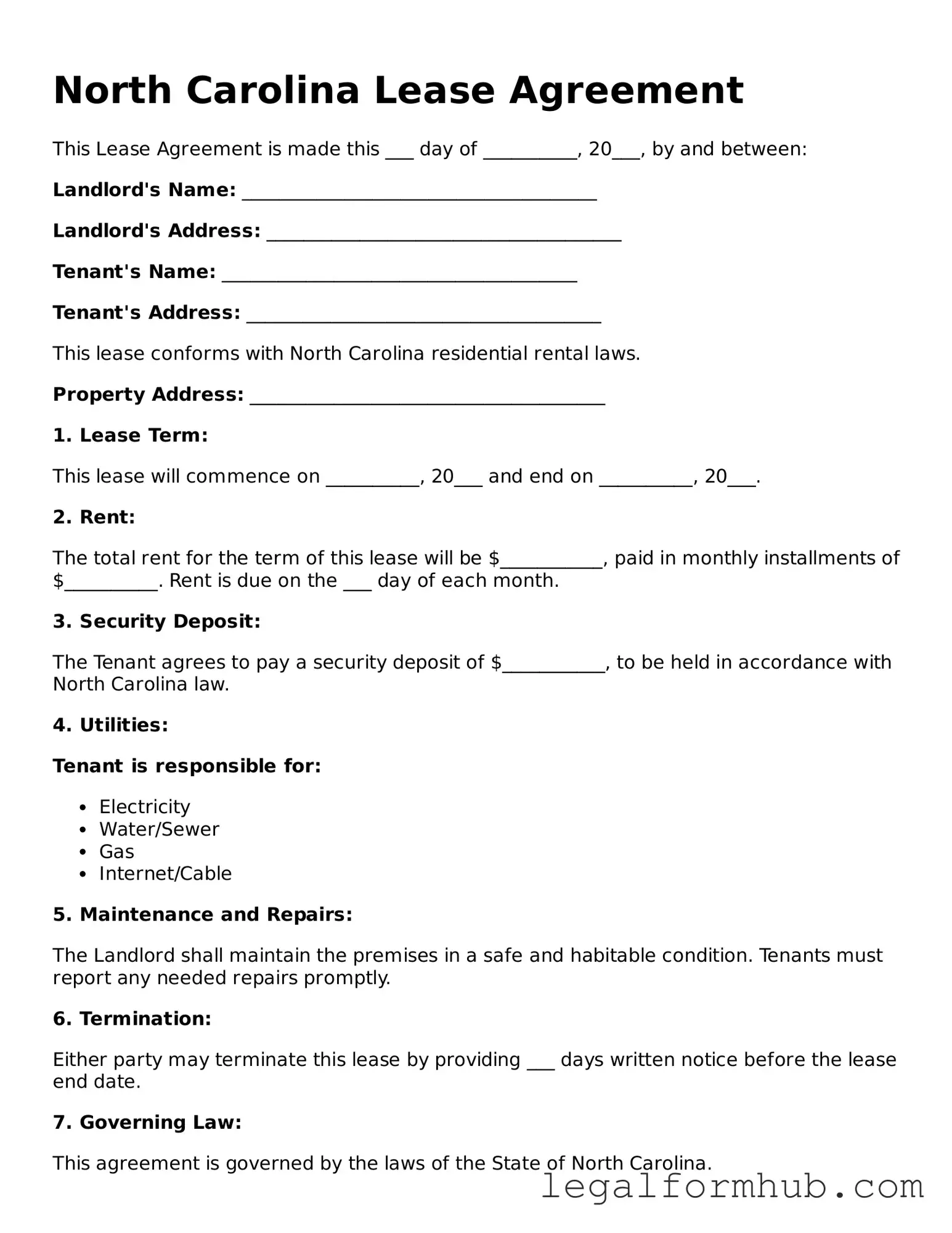The North Carolina Lease Agreement form shares similarities with the Rental Agreement. Both documents outline the terms under which a tenant can occupy a property. They specify details such as the duration of the tenancy, the rental amount, and the responsibilities of both the landlord and tenant. While a lease is typically for a longer period, such as a year, a rental agreement can be more flexible, often covering shorter time frames. Despite these differences, both documents serve to protect the rights of both parties involved in the rental process.
Another document akin to the North Carolina Lease Agreement is the Sublease Agreement. This form allows a tenant to rent out their leased space to another individual, known as the subtenant. Just like the lease, it includes terms about rent, duration, and responsibilities. However, the original tenant remains responsible to the landlord for the lease terms. This agreement provides flexibility for tenants who may need to move temporarily while still covering their rental obligations.
The Commercial Lease Agreement is also similar to the North Carolina Lease Agreement, but it is specifically designed for business properties. Like residential leases, commercial leases detail rental terms, property use, and maintenance responsibilities. However, they often include additional clauses related to business operations, zoning laws, and modifications to the property. Both types of agreements aim to create a clear understanding between the landlord and tenant, but they cater to different needs and legal requirements.
If you're preparing to buy or sell a vehicle, it's crucial to understand the documentation involved. The valid Motor Vehicle Bill of Sale requirements provide clarity on the necessary steps to complete a vehicle transaction legally and securely.
In addition, the Month-to-Month Rental Agreement resembles the North Carolina Lease Agreement in its foundational purpose of outlining rental terms. This type of agreement offers more flexibility, allowing either party to terminate the arrangement with proper notice. While a standard lease typically locks in a tenant for a set period, the month-to-month option allows for easier transitions and adjustments based on the needs of the tenant or landlord.
The Roommate Agreement is another document that parallels the North Carolina Lease Agreement. This form is particularly useful when multiple individuals share a rental property. It establishes guidelines about rent payments, shared expenses, and responsibilities for common areas. While it may not replace a lease, it complements it by ensuring that all roommates understand their obligations and rights, thereby reducing potential conflicts.
Finally, the Lease Purchase Agreement is similar in that it combines elements of a lease with an option to buy the property. This document outlines the terms of renting the property while providing the tenant the opportunity to purchase it at a later date. Both agreements include rental terms, but the lease purchase adds a layer of financial planning for tenants who may want to invest in homeownership while still renting.
